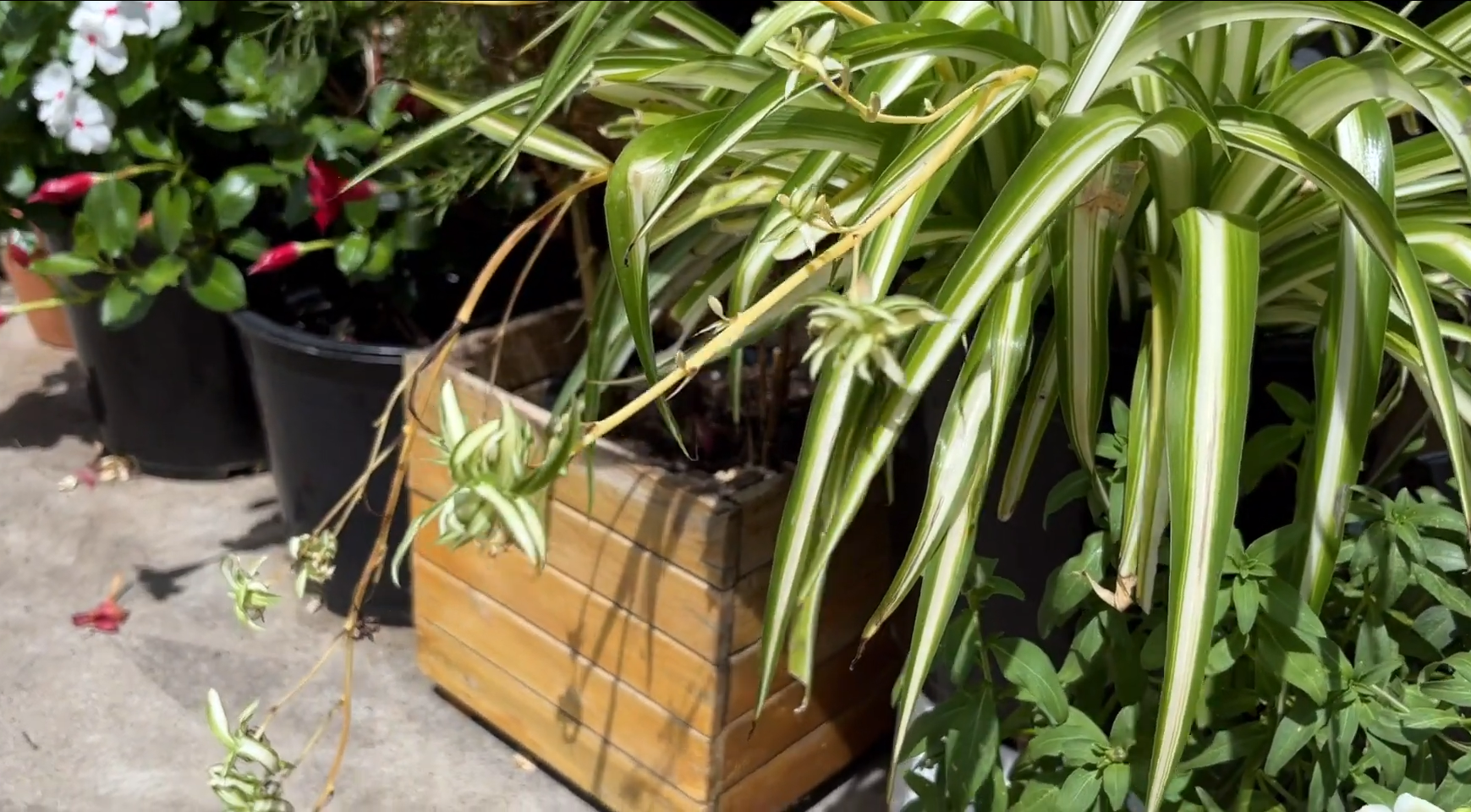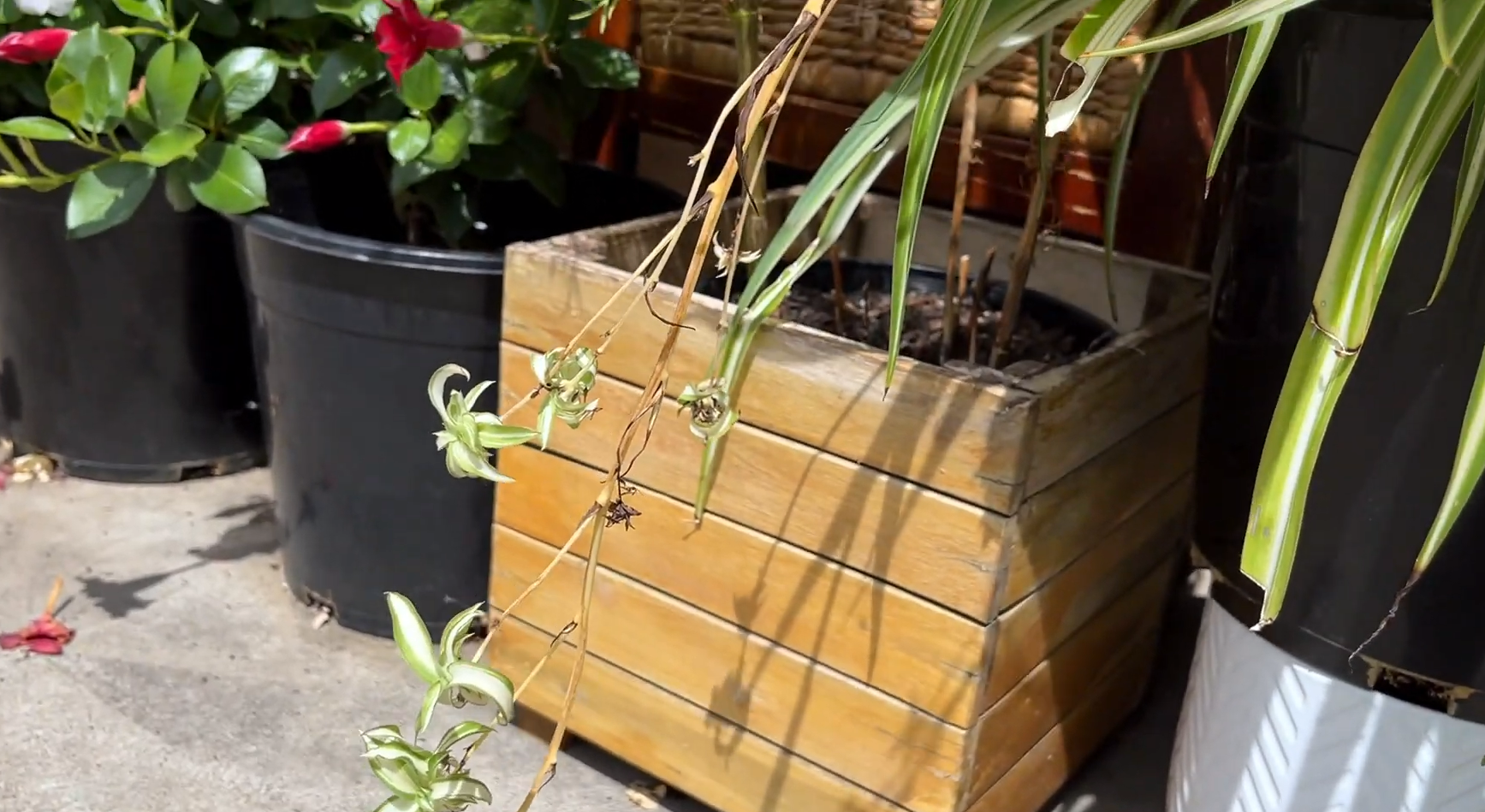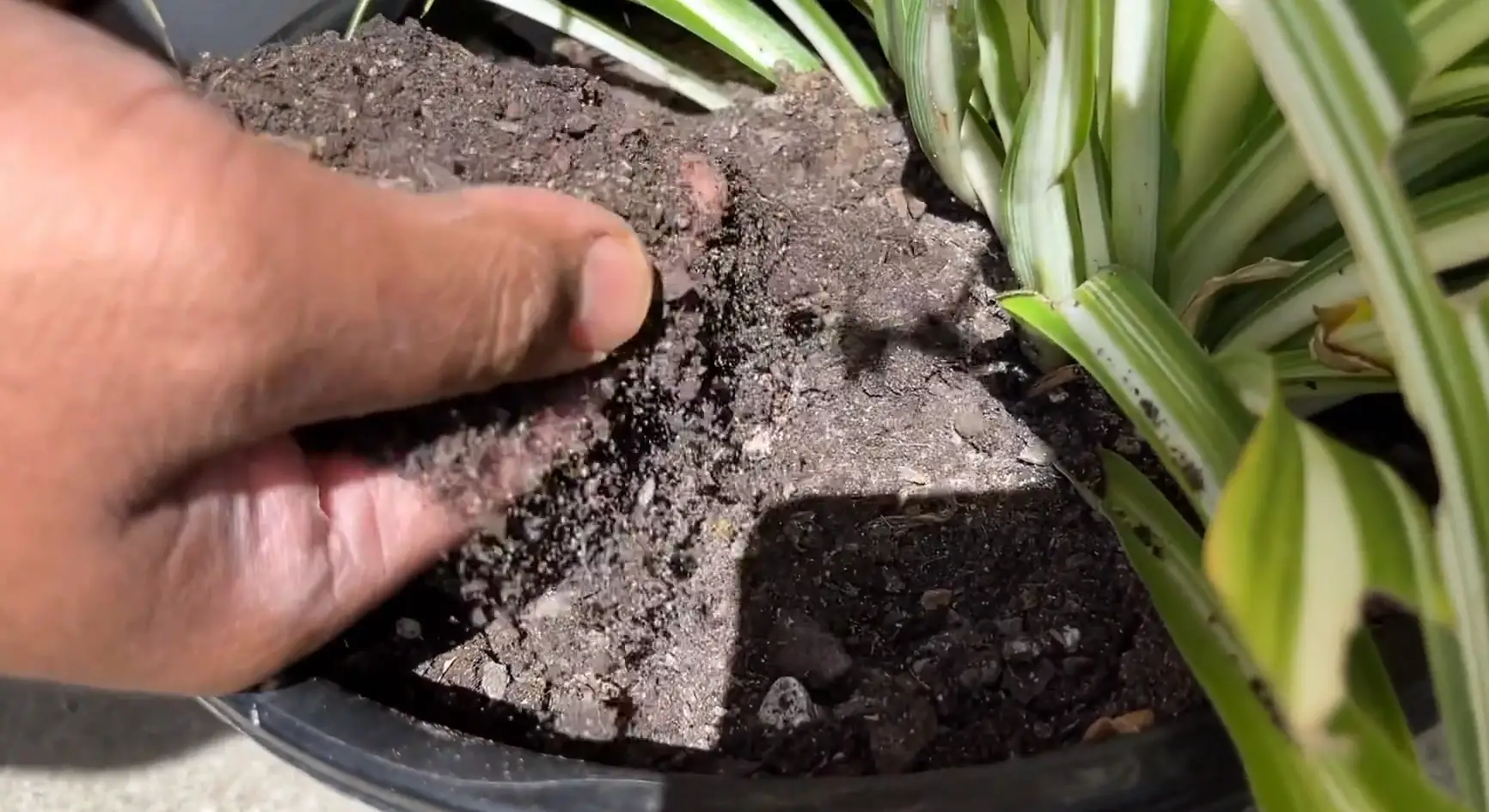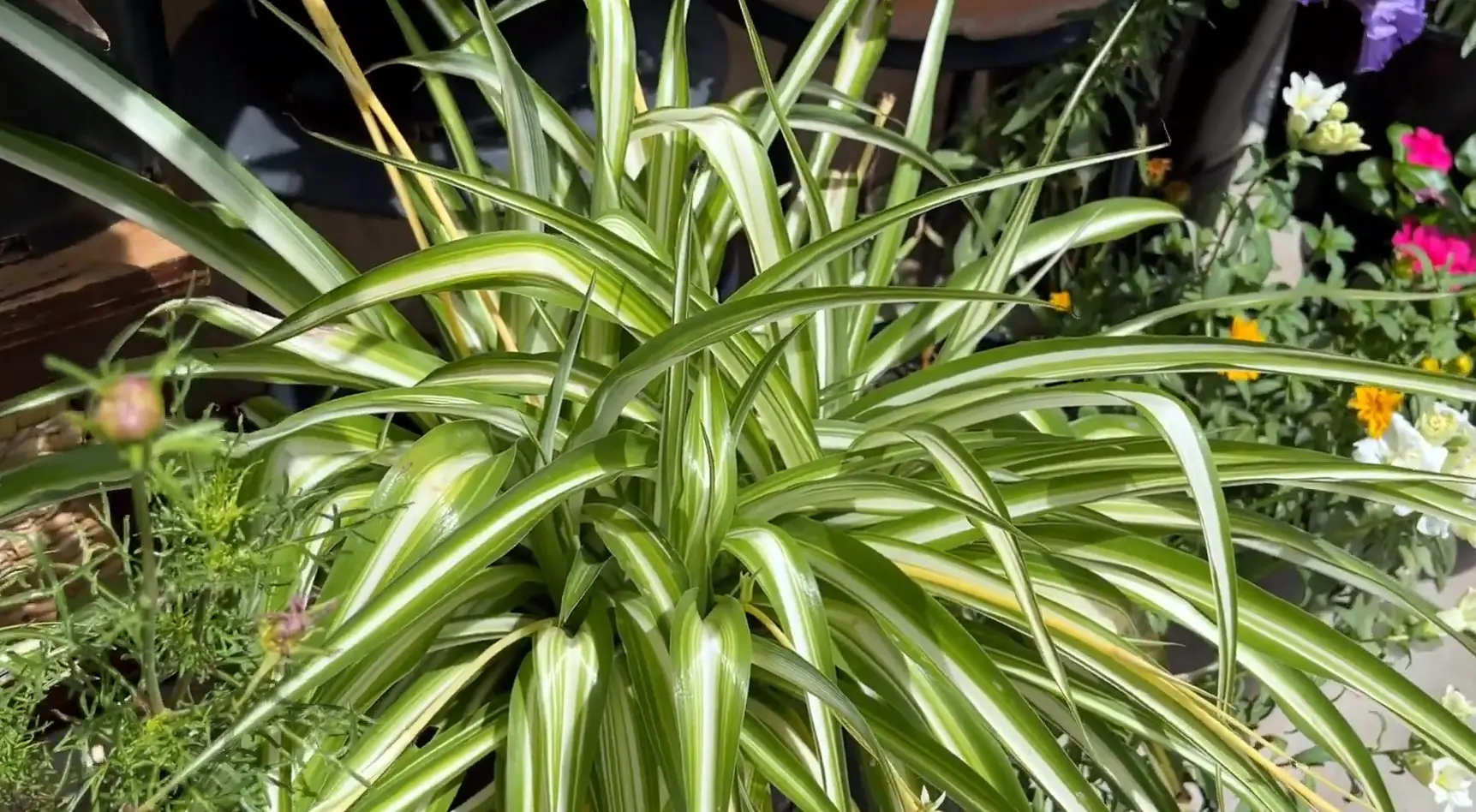Have you ever wondered if spider plants are suitable for the outdoors? Well, wonder no more! Spider plants have earned their place in our indoor and outdoor gardens with their easy-care requirements and striking foliage. Not only are they aesthetically pleasing, they also enhance the air quality by combatting toxins commonly found in synthetic materials that exist indoors. As it turns out, growing spider plants outside can not only be beneficial to our environment –but enjoyable as well! In this blog post we’ll explore what makes a good microclimate for growing these unique green gems outside — from humidity level considerations to how temperatures may affect them. If you’re new to outdoor gardening or looking to refresh existing spaces, this guide offers valuable insights and tips for successful outdoor spider plant cultivation.
Spider Plants
Spider plants, scientifically referred to as “Chlorophytum comosum,” originate from tropical and southern Africa. Thriving in the understory of these regions, they have adapted to flourish in a variety of conditions. [1] The versatility of houseplants lies in their remarkable ability to thrive in various environments. The plant’s common name comes from its spider-like plants, or “pups”, which dangle from the mother plant like spiders on a web. These pups can be easily propagated, making spider plants an easily sustainable addition to your home or outdoor garden.

Characteristics & Types
Plants are identified by their elongated, slender, and gracefully curved foliage. The leaves are typically green with white or yellowish variegated stripes running along the edges or in the middle. They flourish in indirect sunlight, though they can endure in less optimal lighting conditions. The plants are highly adaptable to different soil types, provided they have good drainage. A unique characteristic of spider plants is their ability to produce offshoots or ‘pups’. These pups can be removed and planted separately, making propagation simple and efficient.
- Chlorophytum comosum ‘Vittatum’: The most prevalent variation of the spider plant has distinguishable features such as vibrant green leaves accented by a wide white stripe in the center.
- Chlorophytum comosum ‘Variegatum’:This particular variety displays foliage characterized by white edges surrounding a vibrant green center. The ‘Variegatum’ cultivar is typically slower-growing compared to other variations, yet it shares the same robustness and durability.
- Chlorophytum comosum ‘Mandaianum’: Known as the dwarf spider plant, this variant has a more compact growth habit with shorter, wider leaves. The ‘Mandaianum’ is perfect for smaller spaces, offering all the beauty of a spider plant in a petite package.
Popularity of Spider Plants as outdoor decoration
Spider plants are immensely popular as an outdoor decoration due to their versatility, hardiness, and aesthetic appeal. Their striking foliage, with its unique variegated pattern, adds a splash of green and white to any garden setting, making them a favorite among gardeners and plant enthusiasts alike.These plants can thrive in areas with ample sunlight as well as those with limited shade, making them an adaptable option for various parts of the garden.
In addition to their visual appeal and hardiness, spider plants are also appreciated for their air-purifying properties. They are known to absorb pollutants from the air, contributing to a healthier and cleaner environment. This makes them not just a decorative addition to gardens, but also a functional one. [2]
Lastly, the easy propagation of spider plants enhances their popularity. The ease with which ‘pups’ can be removed and planted separately allows gardeners to quickly and effectively multiply their spider plant population, filling out their outdoor spaces with beautiful, healthy plants without significant effort or additional expense. This combined with the plant’s resilience and minimal maintenance requirements, makes the spider plant a highly sought-after choice for outdoor decoration.
Considerations Before Planting Spider Plants Outside
When planning to grow these plants outside, several factors need to be considered. First, even though spider plants are resilient and can thrive in varying conditions, they prefer well-draining soil. Waterlogged conditions can damage the plant’s roots, leading to decay and potentially killing the plant. Second, while spider plants can tolerate a degree of shade, they should be placed in a location where they can receive ample indirect light for optimal growth.
Third, it’s essential to keep in mind that while spider plants can endure cooler temperatures, they’re not frost-tolerant. Therefore, in areas prone to frost, it would be best to plant them in pots that can be moved indoors during the colder months.
Finally, even though spider plants are typically not the preferred target of pests, they can sometimes experience infestations. Regular checks for common pests such as spider mites, aphids, and mealybugs can ensure the plants remain healthy and vibrant. To guarantee the prosperous growth of your outdoor spider plants, it is vital to comprehend and tackle these important factors.
Steps to Successfully Plant Spider Plants Outside
Now that we’ve addressed the key considerations for planting spider plants outside, let’s delve into the steps one should follow for a successful planting and growth process. This guide will provide you with a clear, easy-to-follow procedure that ensures your spider plants not only survive but thrive outdoors.
Transplantation Timing
Identifying the apt time and season for transplantation is crucial for the successful growth of spider plants outdoors. This is primarily because the timing influences the plant’s ability to adapt and thrive in its new surro. These plants, like many other houseplants, are best transplanted in the early spring. During this period, plants are coming out of their winter dormancy and entering a phase of active growth, making them better equipped to handle the shock of transplantation.
Remember, the goal is to give your plant the best chance of successfully adapting to its new outdoor surroundings. By choosing the optimal time for transplantation, you’re setting the stage for your plant to flourish outdoors.
Site Selection
Just as important as timing, is site selection for your spider plant. The site you choose will greatly influence the plant’s growth and health.Spider plants thrive best in areas with bright, indirect lighting. While they can withstand a certain amount of shade, excessive shade can lead to elongated stems and fading of their variegation. Direct sunlight, on the other hand, can scorch their leaves.
Therefore, choose a site that receives filtered sunlight or is in partial shade for the best possible results. Having a sheltered area that provides some defense against wind and heavy rainfall can be beneficial, as these weather conditions have the potential to harm the plant’s fragile leaves.
In summary, when selecting a site, consider the light, wind, rain exposure, and soil type. By choosing a suitable location, you’re ensuring your spider plant has the necessary conditions to grow and thrive outdoors.
Soil Preparation
The health and growth of your spider plant heavily depend on the type of soil it grows in, making the selection of soil an important decision. Spider plants fare best in well-draining, nutrient-rich soil. [3] This particular soil type offers the vital components required for plant development and permits proper drainage, averting water saturation and related problems like root decay.
In understanding the importance of soil choice, you’re laying the foundation for a robust, healthy spider plant that can thrive in its new outdoor environment.
Transplantation Technique
Transplanting your spider plant outdoors requires careful attention to ensure its survival and growth. Start by excavating a hole that is deep as the root ball of the plant. Extract the spider plant from its container, being careful not to harm the roots. Position the plant in the hole, ensuring that the top of the root ball aligns with the surface of the soil. Fill it with soil, lightly compacting to eliminate any air pockets.
Give the plant a generous watering right after planting to aid in its establishment. Lastly, add a coating of natural mulch surrounding the plant to preserve soil moisture and inhibit weed growth. Continue to monitor and care for your plant as it adjusts to its new outdoor home, watering regularly and checking for any signs of stress or disease.

Watering and Mulching
Consistent watering and mulching are critical to the well-being of your outdoor spider plant. The frequency of watering spider plants can vary based on factors like the prevailing weather conditions, the composition of the soil, and the developmental stage of the plant. Common advice suggests watering spider plants weekly during their active growth phase, with a decrease in frequency during the dormant winter period. To avoid overwatering, it is recommended to allow the soil to partially dry out between each watering.
By adhering to the proper watering schedule and mulching techniques, you can ensure the vitality and longevity of your spider plant in its outdoor setting.
Caring for Outdoor Spider Plants
Outdoor spider plants are relatively low-maintenance, but there are a few key tips that can further enhance their growth and health.
- Pruning: Regularly prune your spider plant to maintain its shape and enhance vigorous growth. Remove yellow or brown leaves at the base to keep the plant looking fresh.
- Fertilizing: Spider plants can thrive when provided with a balanced fertilizer every two weeks throughout their active growth period. However, take care to not over-fertilize as this can lead to salt buildup which the plant dislikes.
- Shade and Sun: While spider plants can tolerate a range of light conditions, they thrive when exposed to bright, indirect light. If you notice leaf scorching, it could be an indication that the plant is receiving an excessive amount of direct sunlight.
- Pests: Look out for common pests such as spider mites and aphids. If you notice any, treat the plant with a mild insecticidal soap.
- Winter Care: In colder climates, consider moving the plant indoors or provide a protective cover during frosty nights.
Remember, the key to successful spider plant care is balance – not too much water, not too much sun, and timely care can ensure your spider plant thrives outdoors.

Addressing Potential Challenges
Despite their adaptability, spider plants can face several challenges when grown outdoors, which can affect their health and longevity if unaddressed.
- Overwatering and Root Rot: Overwatering, a common mistake among plant caretakers, can lead to root rot, a harmful condition that can lead to the plant’s demise. Symptoms of root rot include yellowing leaves and a wilted appearance. Always ensure your plant’s soil is well-draining, and if you suspect root rot, consider repotting the plant in fresh, dry soil.
- Invasive Growth: Spider plants have a tendency to spread and can become invasive if not properly controlled. Regular pruning can help manage its growth, prevent it from choking other plants, and maintain the desired aesthetic of your garden.
- Extreme Weather Conditions: Spider plants can withstand a variety of weather conditions, but extremes of heat, cold, or wind can cause damage. Prolonged exposure to direct sunlight can burn the leaves, while frost can freeze and kill the plant. Always keep an eye on weather forecasts and consider moving the plant indoors or providing protective covering during extreme weather.
- Salt Accumulation: Spider plants are sensitive to salt build-up, which can occur from over-fertilization or use of hard water. This can lead to browning leaf tips. If this happens, flush the soil thoroughly with distilled water to leach out excess salts.
- Animal Interference: Outdoor plants can attract attention from animals. Squirrels, rabbits, or domestic pets might dig up or nibble on the plants causing damage. You may need to take steps to protect your plants, such as using non-toxic repellents or physical barriers like garden fencing.
By being aware of these potential challenges, you can be prepared to take swift action if any problems arise, ensuring your spider plant continues to thrive in its outdoor environment.
Decorative Ideas for Home and Garden
Spider plants can make an eclectic addition to your home or garden, whether hanging in baskets or as ground cover. Here are some decorative ideas to consider:
- Hanging Baskets: Spider plants are perfect for hanging baskets due to their unique, arching growth. Position the baskets in areas where the plants can cascade freely, such as the corners of your balcony or patio.
- Living Wall: Create a living wall of spider plants for a dramatic, eye-catching feature. This can be achieved indoors or outdoors, providing an impressive green backdrop.
- Mixed Containers: Spider plants pair well with other plants in mixed containers. Their arching leaves can create a nice contrast with upright or bushy plants like ferns or lilies.
- Window Boxes: Spider plants look great in window boxes, where they can spill over the edge and provide a lush, green view from inside the house.
- Ground Cover: In the garden, spider plants can be used as ground cover in shaded areas. They will spread and fill in the space, providing a low-maintenance, attractive solution for difficult-to-plant areas.
- Indoor Decorations: Inside the house, spider plants can be used to liven up corners, shelves or tabletops. Their low maintenance and air-purifying properties make them an excellent choice for indoor decorations.
Remember, the key to successful decoration with spider plants lies in understanding their needs and growth pattern. With a bit of care and creativity, spider plants can be a delightful addition to your home and garden decor.
Frequently Asked Questions
Do spider plants grow well outside?
Yes, spider plants can indeed grow well outside, although their growth and survival are highly dependent on the specific conditions and climate of the area. Spider plants are tropical plants by nature, and thus, they thrive in warm, humid environments. They are adaptable and can withstand a range of light conditions, from partial shade to bright, indirect light. However, they do not tolerate extreme temperatures or direct sunlight well, as it can scorch their leaves.
Planting spider plants outside is a viable option primarily in USDA hardiness zones 9 to 11, where temperatures do not usually drop below 20°F (-6°C), ensuring the spider plant’s survival. In colder regions, they can still be grown outside during the warmer months, but it’s advisable to bring them indoors as the weather turns colder to protect them from frost damage.
Can you plant a spider plant in the soil?
Absolutely, spider plants can be planted in the soil. In fact, they thrive in a well-draining, general-purpose potting soil. Rich, loamy soil that is slightly acidic to neutral in pH is optimal for their growth. It’s essential to ensure the soil doesn’t become waterlogged, as spider plants are susceptible to root rot. A good tip to remember is to allow the top inch of the soil to dry out in between watering. This helps prevent overwatering and ensures the soil conditions remain ideal for the spider plant’s health and growth.
Are spider plants inside or outside plants?
Spider plants are versatile and can thrive both indoors and outdoors. Typically, they are popular as indoor plants due to their air-purifying qualities and low-maintenance nature. They adapt well to a variety of indoor conditions and are tolerant of low light, making them an excellent choice for indoor gardening. However, as mentioned earlier, they can also be grown outdoors, particularly in USDA hardiness zones 9 to 11 where the temperatures do not usually drop below 20°F (-6°C). Proper care must be taken to ensure they are not overwatered and the soil is well-draining to prevent root rot. Therefore, whether you decide to grow your spider plant inside or outside largely depends on your climate and personal preference.
Can spider plants take full sun?
While spider plants can tolerate a range of lighting conditions, they do not do well in full, direct sunlight. Prolonged exposure to bright, direct sun can scorch their leaves, leading to brown tips and spots. Ideally, spider plants prefer bright, indirect light. If you’re growing them outdoors, a spot with filtered light or shade would be best. If the plant is exposed to strong sunlight, it’s recommended to provide some protective shading, especially during the hottest part of the day. Indoors, a north or east-facing window would be an ideal location for your spider plant.
Useful Video: Growing Spider Plant Outdoors vs Indoors | Best Way to Grow Spider Plant
Conclusion
As you can see, spider plants are a great choice for outdoor decorating. Not only are they low maintenance and easy to care for, but they also look fantastic when planted outdoors. Plus, spider plants are designed to withstand the elements of sun and wind, making them an ideal decoration solution that isn’t at risk of being overtaken by bad weather. With their spectacular look and feel, these plants can add a touch of class to any outdoor area while lowering your involvement with costly artificial decoration pieces or invasive weed species alike. So why not give spider plants a chance as part of your outdoor décor plan today?
References:
- https://lotusbuddhas.com/meaning-and-benefits-of-spider-plant.html
- https://www.gardenia.net/plant/chlorophytum-comosum-spider-plant
- https://simplifyplants.com/soil-for-spider-plant/














Leave a Reply
View Comments